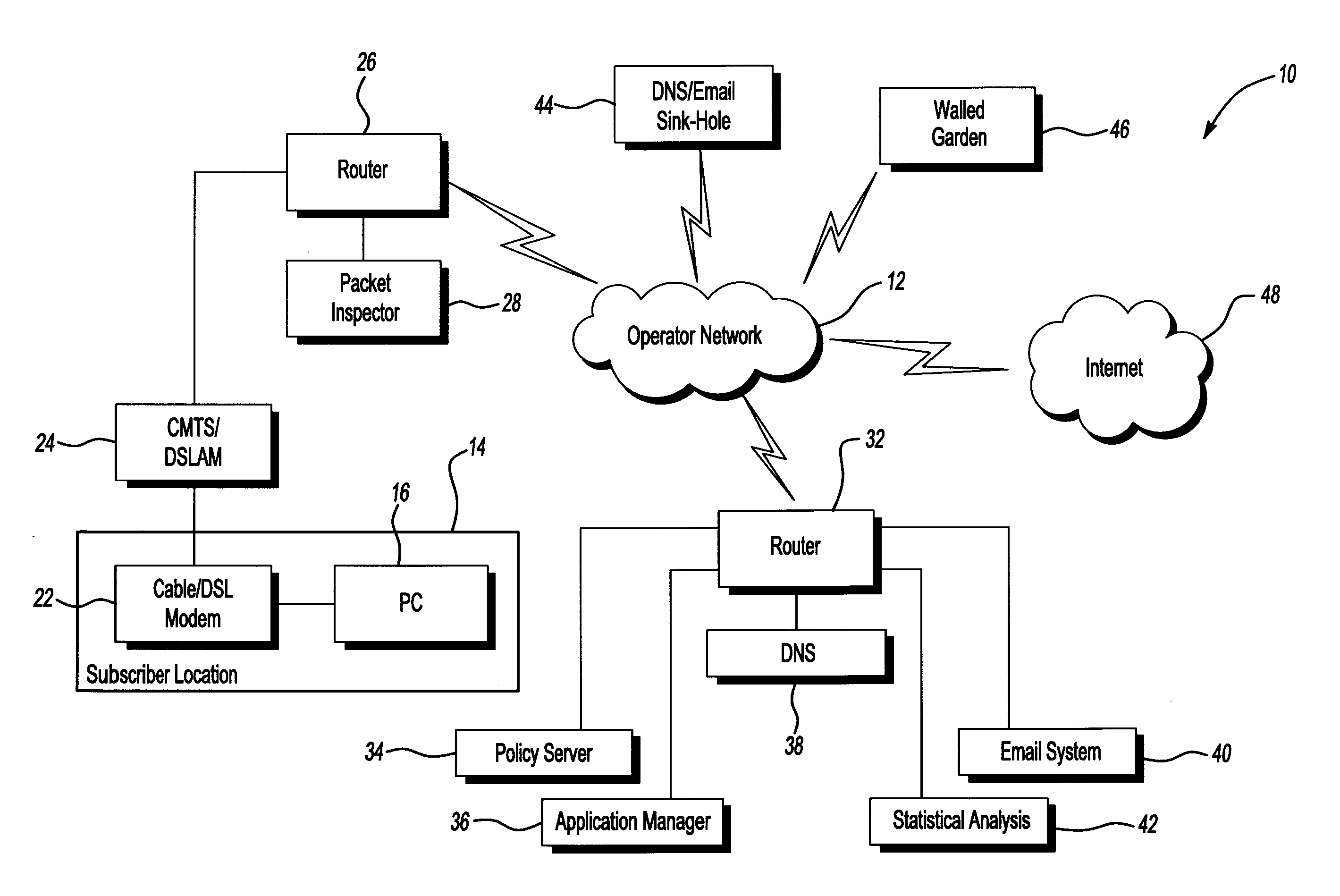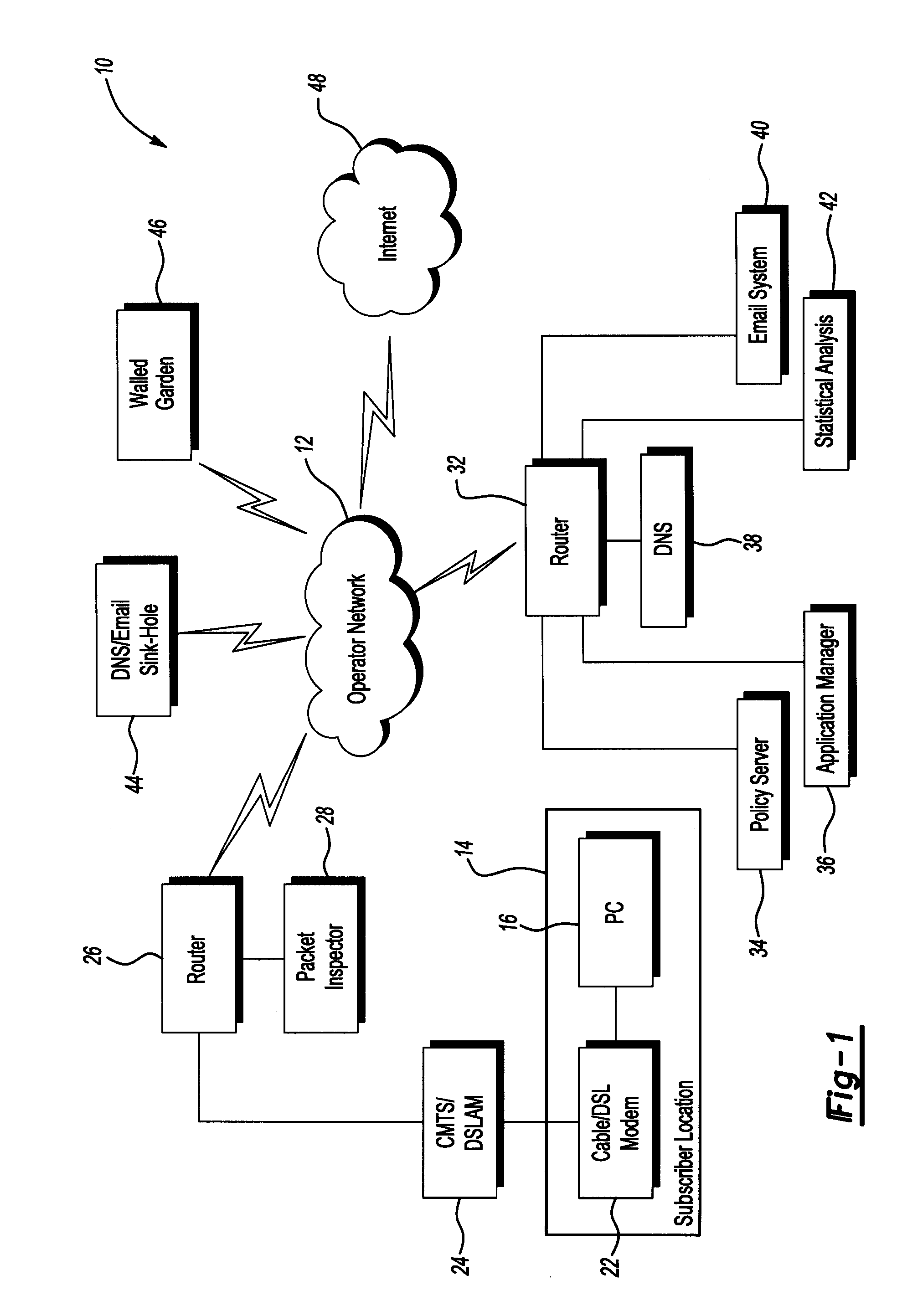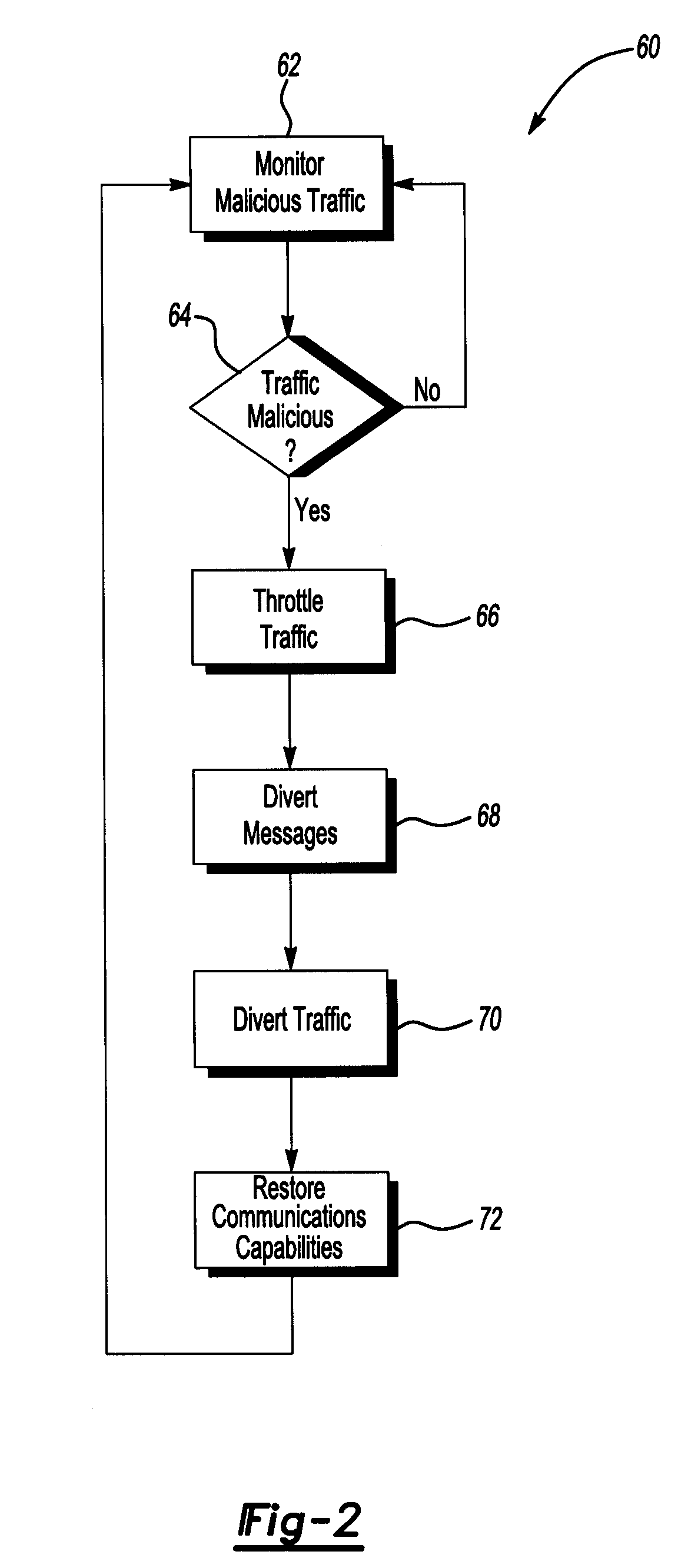Process for abuse mitigation
- Summary
- Abstract
- Description
- Claims
- Application Information
AI Technical Summary
Benefits of technology
Problems solved by technology
Method used
Image
Examples
Embodiment Construction
)
[0013]FIG. 1 illustrates a system 10 for providing media content in accordance with one non-limiting aspect of the present invention. The system 10 may include a media provider (not shown) for providing media services over an operator network 12 to subscribers at one or more subscriber locations 14. The system 10 may 10 include elements suitable for the mitigation of malicious messages carried over the network 12, such as but not limited to elements associated with mitigating malicious messages use with Spam and Denial of Service (DoS) attacks.
[0014]The media provider, for exemplary purpose, is most prominently described with respect to being a cable television service provider having capabilities for providing cable television, telecommunications, and high-speed data services to the subscriber locations, primarily through wired and / or wireless communications. The present invention, however, is not so limited and fully contemplates the provider being associated with any type of ser...
PUM
 Login to View More
Login to View More Abstract
Description
Claims
Application Information
 Login to View More
Login to View More - R&D Engineer
- R&D Manager
- IP Professional
- Industry Leading Data Capabilities
- Powerful AI technology
- Patent DNA Extraction
Browse by: Latest US Patents, China's latest patents, Technical Efficacy Thesaurus, Application Domain, Technology Topic, Popular Technical Reports.
© 2024 PatSnap. All rights reserved.Legal|Privacy policy|Modern Slavery Act Transparency Statement|Sitemap|About US| Contact US: help@patsnap.com










